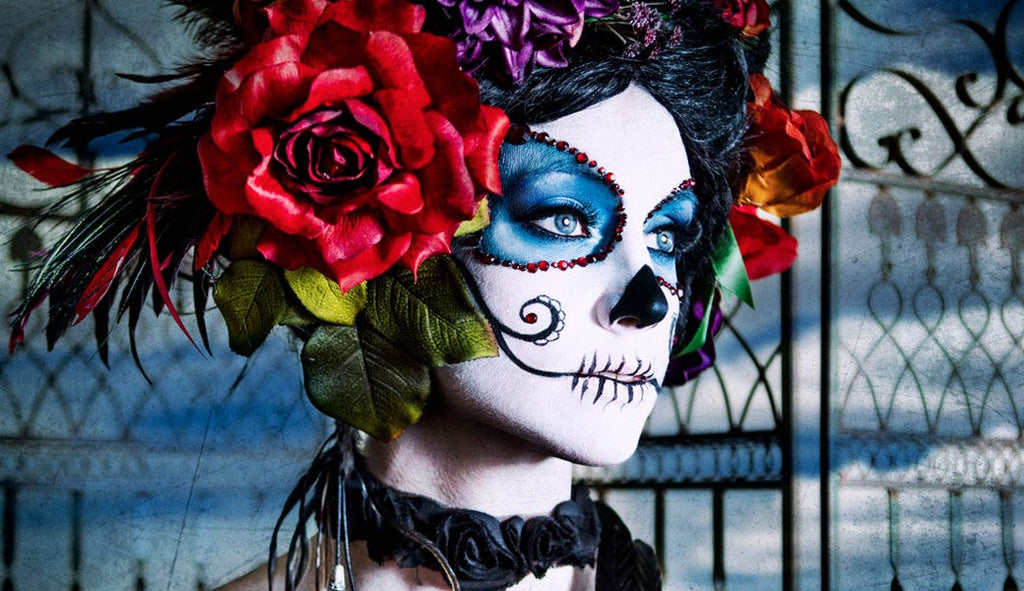Days of the Dead Traditions Throughout the Globe
Every year there comes a time when the gates separating the realm of the living and the dead open, and the spirit world temporarily merges with our own. At least, that’s what many cultures around the world used to believe, and in many cases still do. It’s the origin of Halloween, and millions of people around the world celebrate different versions of this haunting extravaganza.
Samhain
With pagan roots that go back thousands of years, Samhain was celebrated throughout Celtic regions such as Ireland, Scotland, and Galicia, Spain. Celebrated from October 31st to November 1st, it was considered the time when the doorway to the Otherworld opened and goulish creatures, fairies, and the spirits of the dead emerged.
Celebrants would join Druid priests to light a community bonfire that was believed to have protective powers. Sometimes two bonfires were built side by side, and people would walk between them as a cleansing ritual. It was thought that the souls of dead ancestors would come home to visit on Samhain, so families would have feasts and set a place at the table for their deceased loved ones. Some people would dress up in costumes that impersonated the souls of the dead, or pagan gods or fairies, then they would go from farm to farm and receive offerings of food on their behalf. Another familiar tradition was the carving of turnips, or rutabagas, into lanterns with grotesque faces that were used to ward off evil spirits. It’s easy to see how these traditions evolved into the modern holiday of Halloween.
Dia De Los Muertos
Literally translated as the Day of the Dead, Dia de los Muertos is a three-day festival celebrated in Mexico starting on October 31st. Much as Halloween’s roots come from ancient Celtic pagan rituals, Dia de los Muertos dates back thousands of years to ancient Aztec festivities that were dedicated to the goddess of the afterlife and the underworld.
During the festival, it’s believed the veil between the living and the dead is lifted, and families joyfully remember their departed loved-ones with anecdotes and with beautifully decorated altars dedicated to them. Ancestor’s graves are cleaned and decorated with food, such as sweet “bread of the dead” baked to look like bones. Vibrant, orange marigolds are placed on altars and graves, since they are considered the only flowers that the departed souls can smell from the other side, and they are used to guide the spirits to their altars. Other offerings include favorite foods and drinks of the deceased, as well as “calaveras” or artistic representations of skulls, sometimes made out of sugar.
Zhongyuan Festival
In China, there’s an entire month dedicated to honoring the ancestors known as “Hungry Ghost Month” that culminates with the “Hungry Ghost Festival” or Zhongyuan festival. Held on the 15th day of the seventh lunar month, which falls in July or August, it’s the time when the gates to the netherworld open and allow ghosts to pass through.
Feasts are held in the ancestors’ honor and a place is left for them at the table. Altars are created on which family members place food and drinks to appease the hungry ghost. Other offerings such as fake paper money, special papers on which messages to the dead are written, and paper-maché versions of items such as clothes, gold, and cars, are placed on the altar and later burned to be sent to the other world. The festival ends with lanterns being placed on floats and released onto bodies of water, to guide the spirits back to the underworld.
Similar days of the dead festivals are held all over the world, such as Pchum Ben celebrated in Cambodia, Chuseok in North and South Korea, Gai Jatra in Nepal, Bhoot Chaturdashi in India, and Alla Helgons Dag in Sweden. So if you’re sick of seeing Halloween decorations on sale in every supermarket, pharmacy, and big box store, remember you’re just seeing the latest manifestation of an ancient ritual that our ancestors performed since ancient times.










